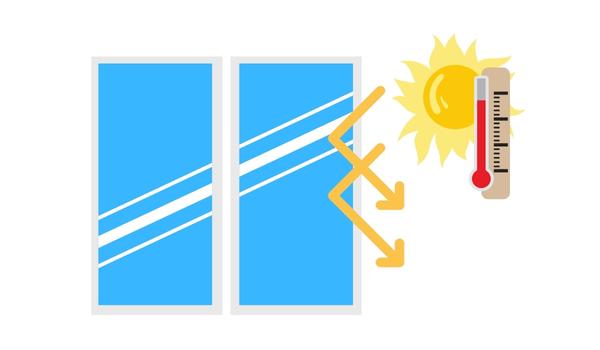Low E Glass

As a glazier in Sydney, I often get asked about the different types of glass available for residential and commercial projects. One type that I highly recommend is Low-E glass. Low-E stands for low-emissivity, which means that the glass has a special coating that reflects infrared light, helping to keep buildings warmer in the winter and cooler in the summer.
History of Low-E Glass
Low-E glass was first developed in the 1970s as a way to improve the energy efficiency of buildings. The early versions of Low-E glass had a metallic coating that was applied to the surface of the glass. However, as technology has advanced, the coatings have become more sophisticated and are now applied in a vacuum chamber.
How is Low-E glass made?
Low-E glass is made by applying a thin coating of metal to the surface of the glass. This coating reflects infrared light, which helps to keep buildings warmer in the winter and cooler in the summer. The coating is applied in a vacuum chamber, which ensures that the coating is even and consistent. Low-E glass can be made in a variety of ways, including pyrolytic, sputtered, and hard-coated.
What are the advantages of Low-E glass?
Low-E glass has a number of advantages, including:
- Improved energy efficiency: The coating on Low-E glass helps to keep buildings warmer in the winter and cooler in the summer, which can help to reduce energy costs.
- Reduced glare: The coating on Low-E glass helps to reduce glare, which can be beneficial for people who are sensitive to light.
- UV protection: The coating on Low-E glass helps to block UV radiation, which can help to protect furniture and carpets from fading.
What are the disadvantages of Low-E glass?
Low-E glass does have a few disadvantages, including:
- Higher cost: Low-E glass is more expensive than regular glass.
- Visible Light Reflectance: Some coatings can have a visible light reflectance which can be an issue, this can be solved by using different types of coatings.
- Reduced visibility: Some types of Low-E glass may have a slight tint, which can reduce visibility.
What are the applications of Low-E glass?
Low-E glass is suitable for a wide range of residential and commercial applications, including:
- Windows: Low-E glass can be used in windows to help improve the energy efficiency of buildings.
- Skylights: Low-E glass can be used in skylights to help reduce the amount of heat that enters a building.
- Doors: Low-E glass can be used in doors to help improve the energy efficiency of buildings.
- Facades: Low-E glass can be used in building facades to help improve the energy efficiency of buildings.
In conclusion, Low-E glass is a great choice for anyone looking to improve the energy efficiency of their home or business. It may cost a bit more than regular glass, but the energy savings and other benefits make it worth the investment. As a glazier in Sydney, I highly recommend Low-E glass for any residential or commercial project.

AUTHOR: Nhu Tran
Operations Manager & Glazier at Grand Glass Repairs - Door & Window Glass Replacement
Nhu Tran is a highly experienced glazier who currently works for Grand Glass Repairs in Sydney. With many years of experience in the field, Nhu has become an expert at he’s craft and can be counted on to get the job done right, no matter how challenging it may be. He takes great pride in her work and is always looking for new ways to improve her skills. When she’s not working, Nhu enjoys spending time with he’s family and friends.
